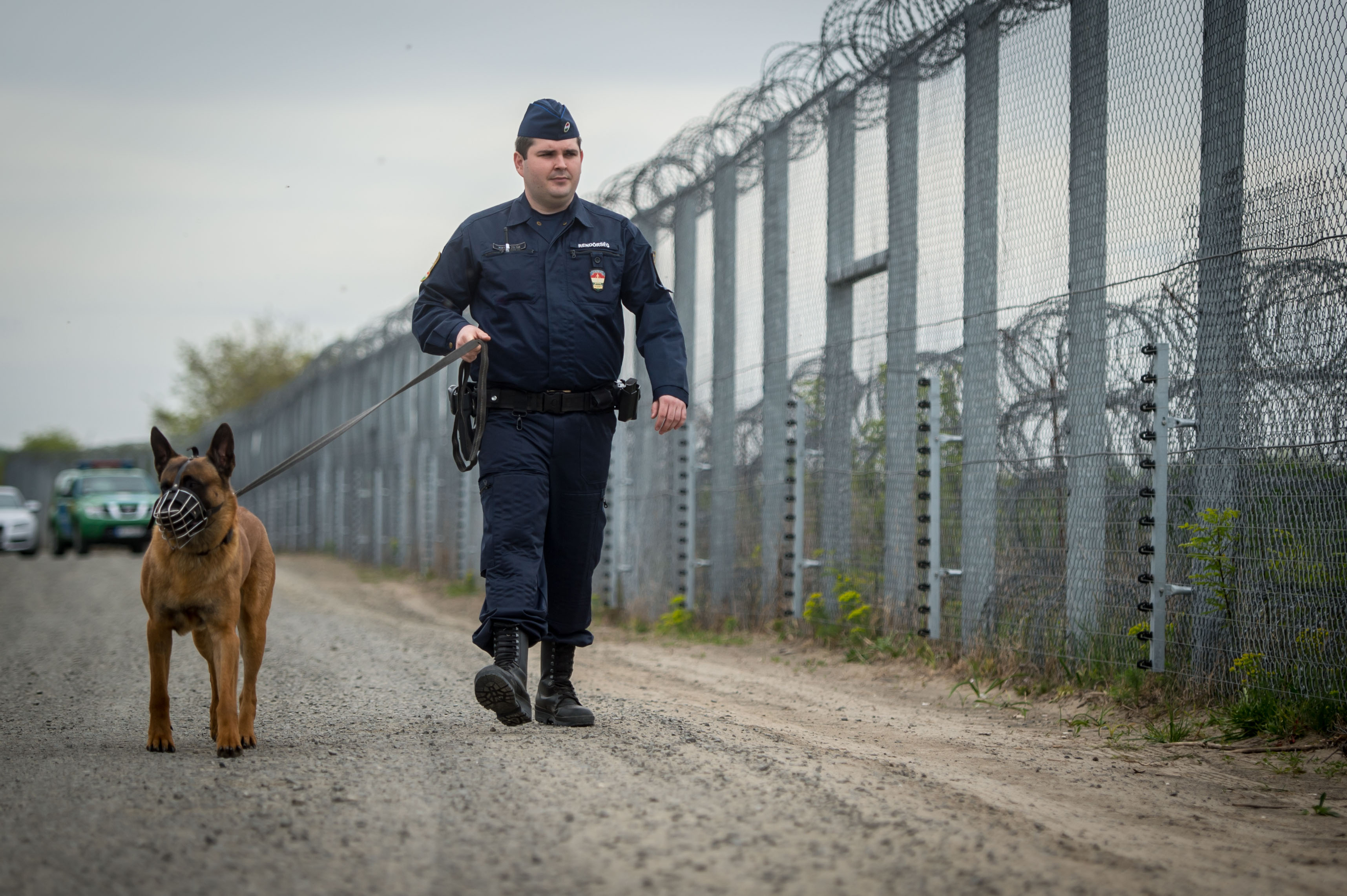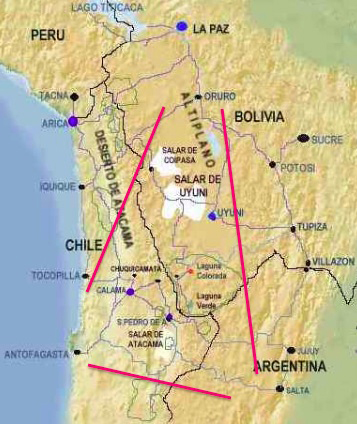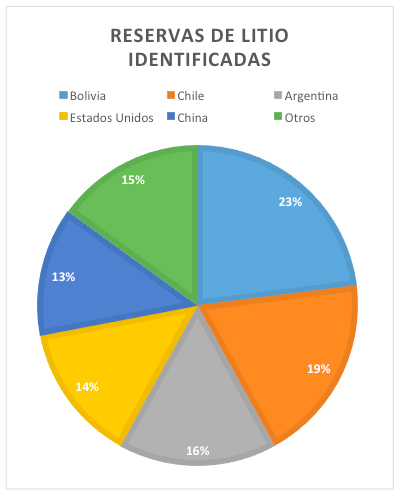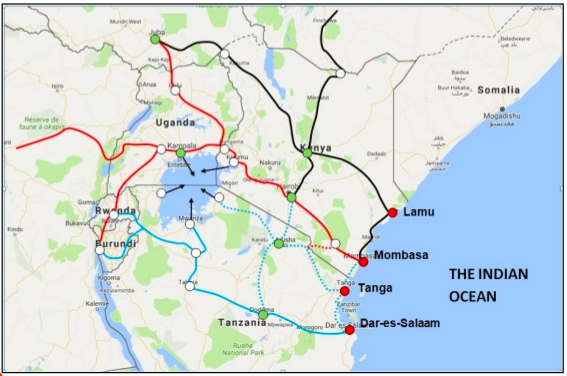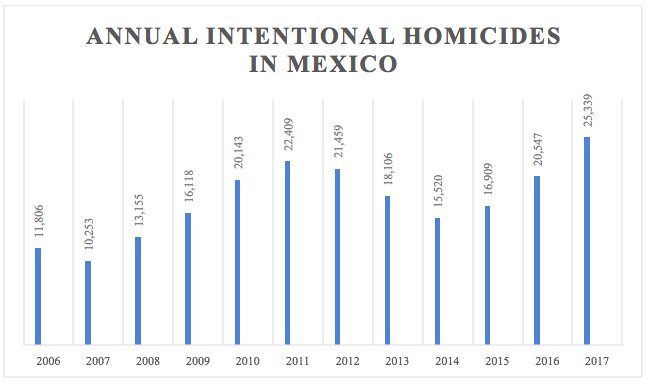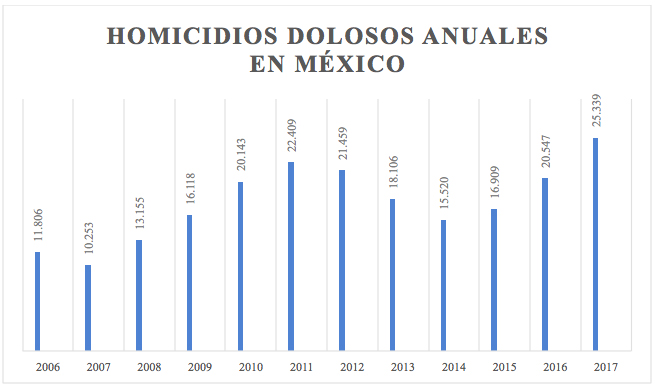Ruta de navegación
Blogs
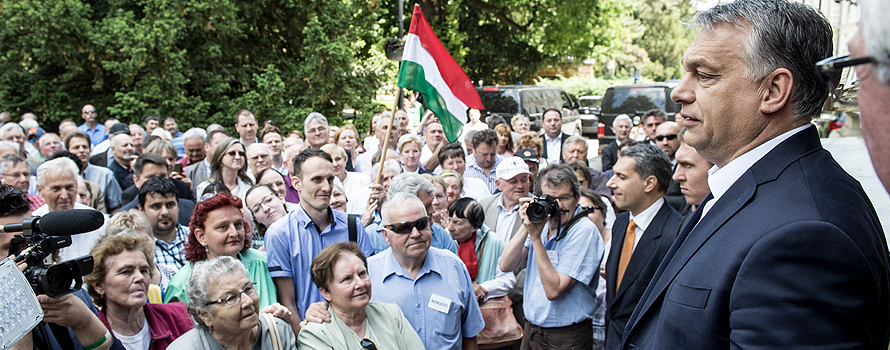
▲Viktor Orban, at a rally near the Romanian border in May 2017 [Károly Árvai/Hungarian government].
ANALYSIS / Elena López-Doriga
On April 8, 2018, parliamentary elections were held in Hungary for the renewal of the 199 members of the National Assembly, the only chamber of the Hungarian Parliament. The high turnout of 68.13% exceeded that of the 2010 elections, when 64.36% of the electoral roll turned out to vote, a record high not seen since 2002. Prime Minister Viktor Orban, in power since 2010, secured a fourth term, the third in a row, as his party, Fidesz, and its ally, the Christian Democratic People's Party, won 134 of the 199 seats. Orban, the longest-serving European leader as head of government after Angela Merkel, has in some respects become as influential a leader as the German chancellor.
These electoral data -the high turnout and the broad support achieved by a leader not well regarded by all in Brussels- raise some questions. Why has there been so much social mobilization at the time of voting? Why is the result of these elections in the spotlight of the European Union?
Historical background
Hungary is a country located in Central Europe bordering Austria, Croatia, Romania, Serbia, Slovakia, Slovenia and Ukraine. The second largest river in Europe, the Danube, crosses the entire country and divides the capital of Budapest into two different territories (Buda and Pest).
Hungary joined the European Union in 2004. This event was longed for by Hungarians as they saw it as an advance in their democracy, a step forward for the country's development and a rapprochement with the admired West. It was the desire to make a change of course in their history, since, after the breakup of the Austro-Hungarian Empire in 1918, the country lived under two totalitarian regimes since World War II: first under the rule of the Arrow Cross Party (fascist, pro-German and anti-Semitic), during which 80,000 people were deported to Auschwitz, and later by the occupation of the Soviet Union and its post-war policies. In those times individual freedoms and freedom of speech ceased to exist, arbitrary imprisonment became commonplace, and the Hungarian secret police carried out series of purges both within and outside the Party hierarchies. Thus, Hungarian society suffered great repression from the beginning of World War II in 1945, which did not stop until the fall of the Iron Curtain in 1989.
In economic terms, the transition from communism to capitalism was very hard for vast social sectors. From a centralized Economics with highly protected sectors and heavy agricultural subsidies, a particularly severe adjustment plan was adopted by the government elected in March 1990 in the first free elections.
Accession to the European Union symbolized a turning point in Hungary's history, in a process of incorporation to the West that was previously marked by entrance in NATO in 1999. Becoming part of the EU was the step towards the democracy that Hungary desired, and this broad social consensus was evidenced by the majority support that the accession obtained - 83% of the votes - in the referendum of 2003.
Hungary in the European Union
Becoming a new EU member had a positive impact on Hungary's Economics , leading to an obvious development and providing competitive advantages for foreign companies establishing a permanent presence in the country. But despite these appreciable advances and the enthusiasm shown by Hungary upon accession to the EU, the picture has changed a lot since then, so that Euroskepticism has spread markedly among Hungarians. In recent years, a strong disagreement with the Brussels policies adopted during the 2015 refugee crisis has emerged in the domestic public opinion.
That year, Brussels decided to relocate the 120,000 refugees who had arrived in Hungary (from Syria, who were moving along the Balkan route to Germany and Austria) and Italy (mostly from North Africa). To distribute the refugees, quotas were established, setting the issue number of refugees that each country should take in based on its size and GDP. The quota policy was challenged by the group Visegrad countries (Poland, Hungary, Czech Republic and Slovakia) and Romania. Hungary erected a fence several hundred kilometers long on its southern border and refused to accept the reception quotas.
This attitude of closing borders and refusing to take in refugees was criticized by the leaders of the Union, who went so far as to threaten these countries with sanctions. The difficulty of a consensus led to the signing in 2016 of a agreement with Turkey so that this country would retain the flow of Syrian refugees. In 2017 the quotas for the distribution through the EU of the refugees who had previously arrived expired, without fill in thus the relocation initially raised. Although the moment of greatest political confrontation on this issue in the EU has passed, the refugee crisis has created a great divergence between the two targeted blocs, eroding the supposedly common European project .
In light of this status, Hungary's parliamentary elections on April 8, 2018 were particularly important, as the citizens of that country were going to have the opportunity to pronounce themselves on the ongoing pulse between Budapest and Brussels.
The main candidates
Going into the election, the front-runner was the coalition of the conservative Fidesz party and the Christian Democratic People's Party, with 54-year-old Viktor Orbán as candidate. Orbán first came to prominence in 1989 when, at the age of 26, he defied the communist regime and began to champion liberal principles, making him a symbol of Hungarians' aspirations to break free from totalitarianism and embrace Western values. However, his return to power in 2010, after a first term in office between 1998 and 2002, was marked by a shift towards a conservative tendency, characterized by greater control over the Economics, the media and the judiciary. Orban claims to be an advocate of an "illiberal democracy": a system in which, although the Constitution may formally limit the powers of the Government, in internship certain freedoms such as freedom of speech or thought are restricted. Orban often puts to test the red lines of the EU by presenting himself as a defender of a "Christian Europe" and detractor of irregular immigration.
The party that intended to pose the main electoral challenge to Fidesz, taking away a good part of its voters, was surprisingly one located even further to the right: Jobbik (Movement for a Better Hungary), founded in 2003 and considered one of the most powerful extreme right-wing political organizations in the European Union. For years, this party did not hide its xenophobic, anti-Roma, anti-Semitic, nationalist and radically opposed to the prevailing political system in the EU, betting on a Hungary outside it. However, from 2013 onwards he moderated his language. While Orban was adopting an increasingly radical line, the leader of Jobbik, Gábor Vona, was tempering the positions of his party to present it as a conservative option, alternative to Fidesz, capable of attracting votes from the center. Gyöngyösi, one of the party's nationalist leaders, said: "We are the party of the 21st century, while Fidesz is from the last century and represents the old. The division between left and right no longer makes sense, it is part of the past, of the old politics".
On the other side of the political spectrum, a list formed by the Socialist Party(MSZP) and the center-left environmentalist party Parbeszed ("Dialogue"), headed by a leader of the latter, Gargely Karacsony, was running in the elections. The left-wing candidate had broad support from the MSZP, but not from his former colleagues in the environmentalist LMP party, from which he split five years ago, which could lead to a split vote.
|
Completed a second fence at the border with Serbia, in April 2017 [Gergely Botár/Hungarian government]. |
The election campaign
During the campaign there was speculation about a possible loss of votes for Fidesz due to a series of corruption scandals involving government officials accused of embezzling European aid money. Jobbik and other groups of civil service examination took advantage of this status to promote themselves as anti-corruption parties, focusing a good part of their campaign on this issue and advocating for an improvement of public services, especially healthcare.
However, the most prominent topic of the election campaign was not corruption, the malfunctioning of the public health system or low wages, but immigration. The Orbán government had refused to accept the refugee quotas imposed by the EU from Brussels, arguing that taking in migrants is a matter of domestic policy in which foreign organizations should not intervene. He insisted that Hungary has the right to refuse to receive immigrants, especially if they are Muslims, reiterating his rejection of multiculturalism, which he considers a mere illusion. Orbán was of the opinion that the refugees arriving at Hungary's gates were not fighting for their lives, but were economic migrants in search of a better life. Therefore, Orbán's political campaign was a clear message: Illegal immigrants in Hungary: yes or no? Who should decide about Hungary's future, the Hungarians or Brussels?
Reducing the electoral call to one question had the main effect of a broad social mobilization. According to civil service examination, Orbán used the topic of migration to draw popular attention away from widespread corruption.
Another point core topic in Fidesz's political campaign was the constant accusations against George Soros, whom Orbán identified as the main enemy of the State. Soros is an American billionaire, of Jewish-Hungarian origin, who through his Open Society Foundation (OSF) finances various NGOs dedicated to promote liberal, progressive and multicultural values in different parts of the world. In 1989 Soros funded Viktor Orban to study in England, and in 2010 he donated $1 million to his government to help with environmental cleanup after a chemical accident. But Soros' reputation in Hungary took a hit during the 2015 migration crisis. His advocacy of human attention to refugees ran up against Orban's attitude. During the campaign, the latter accused Soros of using OSF to "flood" Europe with a million migrants a year and undermine the continent's "Christian culture."
In addition, prior to the elections, Fidesz passed an amendment to the Hungarian higher Education law, which sets new conditions for foreign universities in Hungary, something that has been seen as a direct attack on the Central European University of Budapest. The Soros-funded institution is highly regarded for promoting critical thinking, liberal values and academic freedom. The new legislation threatens university autonomy, the free hiring of professors and the international character of degrees.
The European Commission showed its differences with the Orbán government on several of the issues that occupied the electoral campaign. Thus, it expressed its dissatisfaction with the new university law, considering that it is not compatible with the fundamental freedoms of the EU internal market, as it "would violate the freedom to provide services and the freedom of establishment". He also criticized that Orbán had not complied with the refugee quota, despite the ruling of the Court of Justice, and that he had campaigned using the disagreement he has with the EU for electoral purposes.
The result of the elections
In the April 8, 2018 elections, the Fidesz party (in its alliance with the Christian Democratic People's Party) won a third consecutive wide victory, even bigger than the previous one, with almost half of the popular vote (48.89%) and its third two-thirds absolute majority (134 out of 199 seats). It was the first time since the fall of communism in 1989 that a party had won three elections in a row.
The Jobbik party managed to become the leading party on civil service examination, coming in second place with 19.33% of the vote and 25 seats. However, its vote growth was minimal and it gained only two extra seats, remaining virtually stagnant at the 2014 figures. Jobbik's second place was rather propitiated by the weakness of the Hungarian Socialist Party (MSZP), whose debacle pushed it into third place, with 12.25% of the vote and 20 seats. It was the first time since 1990 that the MSZP did not come in first or second place, putting an end to the bipartisanship it had maintained with Fidesz since 1998.
On the other hand, since its return to government in 2010, Fidesz has significantly modified the electoral system, reducing the issue number of legislators from 386 to 199 and eliminating the second round, which does not favor the smaller parties, which could form alliances between rounds of voting. By securing two thirds of the chamber, Fidesz will be able to continue governing comfortably and reforming the Constitution to suit itself.
EU reaction
A week after the elections, tens of thousands of opponents took to the streets of Budapest, disagreeing with an electoral system described as "unfair", which has given Prime Minister Viktor Orban a landslide victory at the polls after a campaign based on a refusal to accept refugees.
The congratulatory letter that the president of the European committee , Donald Tusk, addressed to Orban was considered by various media to be cooler than the one issued on other similar occasions. The EU is concerned that Orban continues with his defense of an "illiberal" democracy and that he seems to be leading the country towards authoritarian tendencies. The government's purchase of many media outlets in recent years, in order to isolate civil service examination and make more propaganda, resembles what has happened in countries such as Russia and Turkey.
It is true that with Orban at the head of the government Hungary has grown economically at a good pace and that the middle classes have improved their status, but his latest victory has been due not only to the good economic management , but the defense of values that the Hungarian people consider important (essentialism, Christianity, respect for borders).
European socialists have not been pleased with Orban's new victory, insinuating that it is a setback for democracy in Hungary. The joy that the populist parties have expressed over his victory is test that Orban, whose training Fidesz still belongs to the European People's Party, has become an exponent of modern ultra-nationalism, which threatens democratic ideas of the European Union.
For the time being, Brussels is being cautious with Hungary, even more so than with the British Brexit, since Viktor Orban, seen by many as "the EU rebel", unlike the UK, wants to remain within the bloc, but change part of the ideals he represents.
[Robert Kaplan, Earning the Rockies. How Geography Shapes America's Role in the World. Random House. New York, 2017. 201 pages]
REVIEW / Iñigo Bronte Barea
Despite rising powers in conventional geopolitics, the United States today remains unopposed due to geography as an overwhelming advantage for the US. As such, the country is blessed with a trifecta of comparative advantages. The country is bound by oceans on both sides, lacks any real threat from its neighbors, and contains an almost perfect river network.
Throughout the book, Author Robert D. Kaplan guides the reader as he travels the US, portraying how geography impacts the livelihood of its population, analyzes the concerns of its citizens, and studies how the country achieved its current composition from a historical lens.
The author introduces the topic by arguing that the world's security during the 20th and 21st century largely depended on the political unity and stability of the United States. Kaplan crosses the country to study how geography helped the US attain the position that they have in the world. The title of his book, "Earning the Rockies," emphasizes the importance of the fact that in order to achieve western part of nowadays US, it would be necessary to first control the East, the Midwest, and the Great American Desert.
During his travels, Kaplan brought three books to reinforce his staff experiences on the road. His first book was "The Year of Decision: 1846" from the DeVoto trilogy of the West. From this text, Kaplan learns that America's first empirical frontier was not in the Caribbean or Philippines, but earlier in the western part of the country itself. Kaplan also stresses the idea that the solitude and dangers of the old West are today very present in the common American character. In particular, he argues such values remain manifested in the extremely competitive capitalist system and the willingness of its population for military intervention. The last and most important idea that Kaplan gleans from DeVoto was that the defining feature of US greatness today is based ultimately on the country being a nation, an empire and a continent, all rolled into one.
Kaplan starts his journey in the spring of 2015 in Massachusetts. He wanted to contemplate the American continent and its international role, and the one that must be expected for it in the coming years; he wanted to discover this while hearing people talking, to discover what are their real worries.
Back on the East coast, Kaplan traces the country's origins after the independence of the thirteen colonies in 1776. Kaplan starts his eastern journey by examining the US from a historical perspective and how it grew to become a global force without equal. Primarily, Kaplan argues that the US did so by first becoming an army before the US became a nation. For the author, President Theodore Roosevelt was the one who realized that the conquest of the American West set the precedent for a foreign policy of active engagement worldwide.
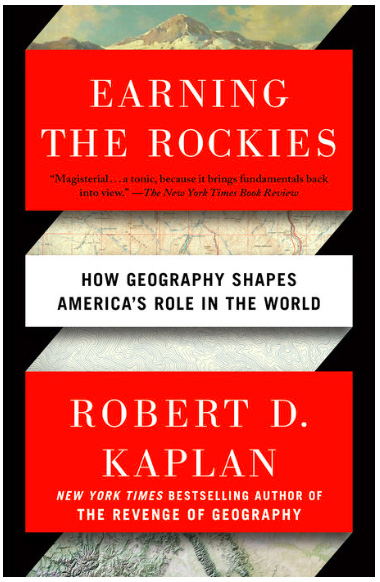 |
Kaplan continues his travels through the Great Lakes region; Lancaster, Pittsburgh, Ohio, and West Virginia. His travel is set in the context of the Presidential primary season, in which he examines the decline of the rural middle class from the staple of the American workforce to near poverty. As such, the devolution of the social process ended with the election of Donald J. Trump. Despite a legacy of success in globalization and multilateralism, America quickly became a nation enthralled with a renewed sense of nationalism and isolationism.
From his travels, Kaplan deduces several types of groups based on the founding fathers. He categorizes them as following: elites in Washington and New York were Wilsonian (who seek to promote democracy and international law), Hamiltonians (who are intellectual realists and emphasize commercial ties internationally) or Jeffersonians (who emphasize perfecting American democracy at home more than engaging abroad). Surprisingly, the huge majority of the American people were actually Jacksonians: they believe in honor, faith in God, and military institutions.
Kaplan continues his path toward the Pacific by crossing Kentucky and Indiana, where the transition zone leads him to the arid grasslands. During his voyage, Kaplan finds that the people did not really care about ISIS, the rise of China, the Iraq War or any other international issues, but instead their worries on their work, health, family, and basic economic survival. This is in fact because of their Jacksonian way of seeing life. This in turn means that Americans expect their government to keep them safe and to hunt down and kill anyone who threatens their safety. Related to this, was the fact that isolationism was an American tradition, which fits well within the current political landscape as multilateralism has lost much of its appeal to people in the heartland.
The native grasses and rich soil of the temperate zone of this part of the country, such as Illinois, promote the fertility of the land that goes on for hundreds and hundreds of miles in all directions. For Kaplan, this is ultimately what constitutes the resourceful basis of continental wealth that permits America's ambitious approach to the world.
West of Lincoln, the capital city of Nebraska, it could be said that you enter the real West, where roads, waterways and urban cities rapidly disappears. At this point, Kaplan begins to make reference to the second book that he read for this part of the journey. This time, author Welter P. Webb in "The Great Plains" explains that the history of the US relies on the history of the pioneers adapting to life in the Great American Desert. This author argues that the Great Plains stopped slavery, prompting the defeat of the Confederacy. He states so because for Webb, the Civil War was a conflict between two sides whose main difference was largely economic. The Southern system based on the plantation economy with huge, "cash" crops and slave labor. On the other hand, the Northern economic system was based on small farms, skilled labor, and a rising industrialized system. While the Great Plains were a barrier for pioneers in general, that wall was greater for the Southern economy than for the industrializing North, which could adapt to aridity unlike the farming economy of the south.
The last book that Kaplan reads while crossing the country is "Beyond the Hundredth Meridian" by Wallace Stenger. The author of this book stresses the importance of the development limitations in immense areas of the western US due to a lack of water. This desert provided a big challenge for the federal government, which manages the little resources available in that area with the construction of incredible dams, such as the Hoover Dam, and turnpike highway system. It remains quite clear that the culmination of American history has more to do with the West than with the East. Stenger is well aware of the privileged geographic position of the US, without dangerous neighbors or other inland threat. In addition, the US contains an abundance of inland waterways and natural resources that are not found on such a scale anywhere else. This characteristic, helps provide the US with geographical and political power unlike any other in modern history. As Stenger stipulates, the fact that World War II left mainland America unscathed, which inly shows how geography has blessed the US.
One of the key aspects that Kaplan realized along his trip was the incredible attachment that Americans have to their military. For Kaplan, this feeling becomes more and more romanticized as he headed westward. In Europe, despite the threats of terrorism, refugees, and Russia, the military is seen locally as merely civil servants in funny uniforms, at least according to Stenger. On the contrary, America, which faces less physical threats than Europe, still maintains a higher social status and respect for military personnel.
In summation, the radical landscape of the west provided Americans with a basis for their international ambition. After all, if they could have conquered and settled this unending vastness, they settle the rest of the world too. However, the very aridity of the western landscape that Kaplan faces at the end of his voyage, requires restraint, planning, and humility in much of what the government had to invest in order to make the west inhabitable and successful. But despite the feeling that they could conquer the world, America faces huge inequalities, real and imagined, that force US leaders to focus on domestic issues rather than foreign affairs. Therefore, elites and leaders in Washington tend to be centrist and pragmatic. In such, they do not dream about conquering the world nor opt to withdraw from it either. Instead, they maintain America's "pole position" place within its global affairs.
At the end, it could be said that American soil itself is what in fact really orients the country towards the world. Despite all the restraint and feelings for the heartland, what really matters are the politicians and business leaders that enable the new American reality: the world itself is now the final, American frontier.
Nearly two-thirds of the world's identified lithium reserves are in Bolivia, Chile and Argentina
The explosion of the electric automotive industry through the use of lithium-ion batteries has put the large reserves of this metal in the Bolivian highlands and the Atacama Desert at the center of global interest in this new industry. Will South America take advantage of the opportunity to enter into processes of technological innovation itself, or will it resign itself, as has happened with so many other minerals, to a mere work of extraction?
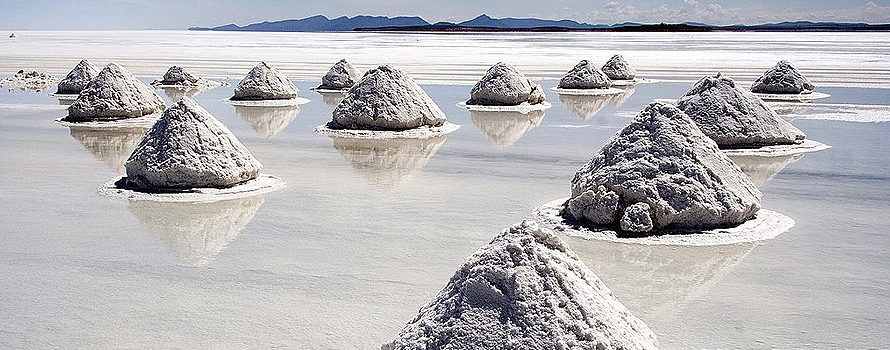
▲Salar de Uyuni, in the highlands of Bolivia [Luca Galuzzi, Wikimedia Commons]
article / Milene Pardo-Figueroa
With the gradual introduction of electric vehicles into the market, as well as the increase in the sale of smartphones, laptops, tablets and other electronic devices – all of which are powered by lithium-ion batteries – the global demand for lithium is increasing. This alkaline chemical element, which in its pure form occurs as a soft, particularly light metal, is abundant in nature, although the largest reserves are concentrated in a few countries. Due to the conditions of its extraction, it is especially profitable in the dry areas of the triangle bounded by the borders of Bolivia, Chile and Argentina. If lithium is known as "white oil" or "new gasoline", because of the color of the saltpeter of the deposits where it is found and because it is the driving force of modern automobiles, the border area of these countries is called the "Saudi Arabia of lithium".
The lithium "fever" has led to a current production of 40,000 tonnes per year, a figure that falls short of the huge demand that currently poses a need of 180,000 tonnes. Although this volume may be reached in the coming years, estimates speak of a demand of between 500,000 and 800,000 tons in 2025. By then, agreement With some forecasts, the global lithium battery market could be worth $46 billion. Part of the industry's push comes from the innovation of electric cars. The expansion of that market, however, could be slowed if lithium production is not accelerated. As visionary entrepreneur Elon Musk, promoter of the high-end electric car brand Tesla, has warned, "in order to create 500,000 vehicles a year, we basically have to retain all the lithium generation on the planet."
The difficulty in meeting this growing demand comes from the high extraction costs, which vary considerably depending on the characteristics of the deposit. The most profitable deposits are found in brine concentrates in arid climates, which experience rapid evaporation when brought to light. The place where this especially happens is the area formed by the Atacama Desert and the Bolivian highlands.
World production is led by Australia, which in 2016 extracted 14,300 tonnes, followed by Chile, with 12,000, and Argentina, with 5,700, of all tonnes. agreement with figures from the U.S. Geological Survey . The volume of reserves identified places the South American countries clearly ahead, especially Bolivia, which has the largest deposits, although for now there are development There is little mining activity for this metal. Thus, Bolivia has identified reserves of 9 million tonnes (22.7% of the world total), Chile 7.5 million (18.9%) and Argentina 6.5 million (16.4%), which means that the three countries have 58% of the world's reserves. They are followed by the United States, with 5.6 million (13.9%), and China, with 5.4 million (13.6%). Other estimates give China reserves similar to Argentina's. The sector is dominated by five large companies, which control 90% of global production: SQM (Chile), FMC and Albermarle (USA), Talison (Australia) and Tianqi Lithium (China).
|
The Lithium Triangle |
Lithium reserves identified |
The White Triangle
The Salar de Uyuni in the Bolivian highlands – a salt-covered surface generated by the evaporation of seawater that was enclosed in a lake when the Andes mountain range emerged in its training– is home to what could be the world's largest lithium deposit. Obtaining it faces the problem that here the metal is specially mixed with magnesium and the separation of the two requires access to technology that Bolivia does not currently have on a large scale. Faced with the fear that foreign companies will be the ones to control the extraction and leave little benefit to the country, as happened historically with the development For the time being, the government of Evo Morales has opted for limited exploitation. Bolivian authorities have preferred to prevent the penetration of multinationals, in order to ensure that the South American nation maintains control of the business. Morales has announced plans for the commissioning, with public funding, of a facility for the manufacture of lithium carbonate at the Uyuni salt plant.
Lithium exploitation is much more advanced in Chile, a country that accounts for around 33% of the world's supply, thanks to the large deposits in the Atacama Desert and the development of an industry of its own. The Society Chemistry and Minera de Chile (SQM), a private Chilean company, leads the national sector, where concessions are tightly controlled by the state. For its part, Argentina is taking steps to boost the lithium business; To that end, the government of Mauricio Macri is proceeding with the liberalization of the sector and has established contacts to attract foreign capital.
Beyond the economic benefits that these South American countries can obtain from the lithium mining boom, a discussion about the ecological impact that it can cause in places as unique due to their natural characteristics as Atacama or Uyuni; There are voices that warn that the Andean saline solution may be doomed to disappear in order to satisfy foreign interest in batteries. There are also fears of a social impact, with no compensation for the human groups settled in the affected territories.
On the other hand, the negative impact that the perpetuation of an economic culture of extraction has historically had in Latin America advises Bolivia, Chile and Argentina to take advantage of the occasion to try to develop their own transformation initiatives and new technologies in the generation of batteries, without limiting themselves, as is the case with so many other minerals, to an extractive activity.
Kenya has the first section of the new railway network financed with financial aid from Beijing.
Africa's participation in the New Silk Road promoted by China involves connecting the hinterland of several East African countries with the main ports on their Indian coast. The designed railway network , which introduces standard gauge in the region, has begun to operate between the two main cities of Kenya: Nairobi and the port of Mombasa. But the full realisation of the project is subject to the questionable model of Chinese investment.
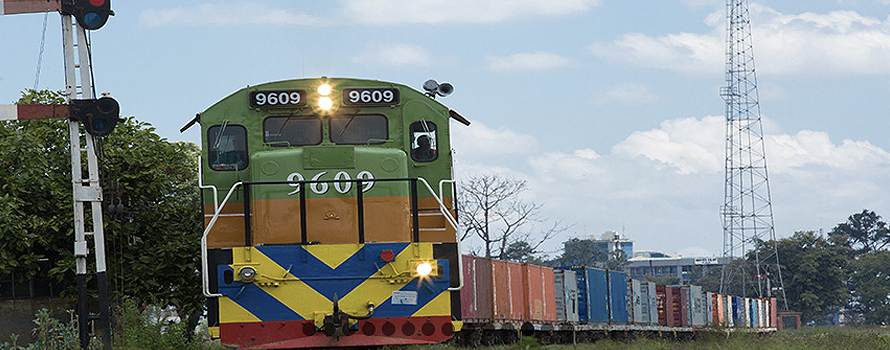
▲Freight transport between Nairobi and Mombasa [Kenya Railways] ▲Freight transport between Nairobi and Mombasa [Kenya Railways].
article / Claudia Correa and Alexia Cosmello
Sino-African relations date back to the 15th century when Zhang, the navigator and trader, arrived on the shores of Mozambique. However, it was with Mao Zedong in 1949 that real relations were established. With promises of respect and taking into account the wounds left by colonisation, China has economically assisted Africa to become its main economic partner since 2009. Through the implementation of economic and technological cooperation projects, it has financed the construction of hydroelectric power plants, dams, airports, aqueducts, hospitals, refineries, gas pipelines, railways and highways in 52 of Africa's 54 countries.
Cooperation between China and Africa has grown considerably. Since 2000, ministerial conferences of the Forum on China-Africa Cooperation (FOCAC) have been held, increasing trade and partnership in areas such as Education, science, technology and health. On the other hand, in terms of lending and investment, China has announced that it will allocate a large part of its capital to projects on the African continent. In 2013, for example, Chinese President Xi Jinping pledged €14.4 billion for infrastructure built by Chinese companies, while in 2014 Premier Li Keqiang announced that China would allocate an additional €8.6 billion to development projects in Africa.
China's rise and intention to broaden and deepen its influence in the world has been very clear in recent years. In September 2013, Xi Jinping presented a new public works expansion project called the New Silk Road. With the goal to gain a foothold in world trade, China aims to improve Asia's connections with other regions by building land routes and articulating a sea route to facilitate trade. Although it is an initiative that will be useful for the international community, it is important to stress the benefits for Africa, since the East African transport route network will be built on its territory, which will give that part of the African continent greater access to world trade, as well as new infrastructure with cutting-edge technology.
Standard Gauge Railway
The network East African freight and passenger goal is intended to connect Kenya's major cities with Uganda's capital Kampala, Burundi's capital Bujumbura, South Sudan's capital Juba and Rwanda's capital Kigali. It is planned to apply standard gauge to most of the route, so the project is known as Standard Gauge Railway (SGR). It is estimated that the network railway will be around 2,935 kilometres in total and will cost around $13.8 billion. position The majority of the financing will be provided by the Chinese government, with financial aid and EiximBank, which will finance 90% of the construction costs, while the Kenyan government will finance the remaining 10% only. The work will be carried out by the Chinese business Road & Bridge Corporation, which is considered to be the most entrepreneurial public business presence in Africa.
The first phase of project, called the Madaraka Express, is now complete and was inaugurated in May 2017. The initiative involved the construction of a railway line to link Nairobi, the capital of Kenya, with Mombasa, the most important port city in Kenya and East Africa. The train can carry 1,260 passengers over a distance of approximately 470 km. With one of the key parts of the network transport network already built, it is possible to continue with the project and move on to the second phase, which will consist of extending the railway lines to the rest of the cities mentioned above.
|
project of the new railway network [Kenya Railways]. |
China's Investment Challenges
What are China's purposes for investing in Africa? It probably does so because it is a large potential market for the sale of its products, as well as a large source source of natural resources. In East Africa, for example, there is oil in Kenya or materials essential for mobile phone batteries in Malawi. In any case, it is clear that this is not a charitable act on the part of the Chinese, as it has been shown that Chinese banks and companies offer financing because it allows them to secure a larger market share in Africa as part of their strategy to go global.
According to Chinese Premier Li Keqiang, "cooperation with Africa is based on respect, equality and mutual benefit". African representatives are enthusiastic about China's investment in Africa's development . The Kenyan president declared that the new train will "revolutionise the region's Economics and reaffirm Kenya's status as an economic hub", and Malawi's ambassador Wang Shiting expressed his thoughts on Africa's development , posting that Africa will only improve when everyone contributes to its development, and that is precisely what China is currently doing.
According to agreement with these official views, from the African point of view, China's intervention on the continent is not seen as negative. However, it does present certain problems, such as the suspicion and accusation of corruption by Chinese investors or the claim that it is aggravatingly widening the economic gap between the more and less well-off, as Chinese investors understandably expect to do business with the continent's elites. There is also the mistreatment of the environment, such as the controversy over the environmental impact of the aforementioned network railway, especially in Kenya, where people have questioned the route through Nairobi Park because of the environmental impact.
It is not only Chinese companies that are investing on the African continent; some Western and European companies have, in some cases, replaced Chinese companies. A prime example is the US multinational General Electric, which in just one year has tripled its workforce in Nigeria, Kenya and Ethiopia. This is possible as a result of the delays or paralysis that some projects have suffered due to the sudden drop in raw material prices and the Chinese slowdown. Thanks to this, some African states with sufficient financial structure have taken the initiative themselves not to let the projects be buried.

▲Flags in a welcome ceremony given to the US vice president in Tokyo, in February 2018 [White House].
COMMENTARY / Gabriel de Lange [English version].
Over the last few decades China has grown in economic and political strength. One of the most recent developments was the inclusion of the document Xi Jinping Thought on Socialism with Chinese Characteristics for a New Era in the Communist Party of China's (CPC) Constitution, which took place during the 19th Congress held in Beijing in October 2017. Later on, in March 2018, the National People's Congress approved to remove from the country's Constitution the limit of two presidential terms. These steps have consolidated the power of the current Chinese leader.
The United States of America on the other hand has been criticized on multiple fronts for its dealings in Asia. Some authors say that Trump's approaches to North Korea, China, and other Asian countries "are damaging US interests" in the Asia-Pacific region, specifically in his rash handling of the threat of North Korea. In terms of economics, withdrawing the US from the TPP (Trans-Pacific Partnership) "has undermined America's influence" in shaping the Asia-Pacific's future and "given China an enormous opportunity to shape that future on its own terms." The withdrawal has made many Asian countries concerned with what the United States brings to the table in terms of economic engagement, and this may encourage them to look to China to fill this void.
One of the main factors that keep Asian countries' foreign policy at a distance from China and closer to the US is due to trouble in the South China Sea, such as in the case of the Philippines with the Spratly Islands or Vietnam with the Parcel Islands. Many have noted these countries' concerns about Chinese intentions "have pushed them closer to the United States." Unfortunately for the US, this dependency is more reliant on China's own decision whether or not to insist their claims to particular islands. This is subject to change if the Xi administration decides that the benefits of stronger relations with their neighbors are more important than these disputed territories.
The question now is, who will the other Asian countries, especially those members of ASEAN (Association of South East Asian Nations) look to rely on as a political ally? With signs of firm, stable, and lasting Chinese power under the authority of Xi Jinping, compared to a seemingly unpredictable, divided, and internationally criticized Trump administration, one may not be surprised to see Asian foreign policies leaning more towards China in the near future.

▲Flags of the United States and Japan at a ceremony welcoming the U.S. vice president in Tokyo in February 2018 [White House].
COMMENTARY / Gabriel de Lange [English version].
In recent decades, China has grown in economic and political strength. The inclusion of the document "Xi Jinping's Thought on Socialism with Chinese Characteristics for a New Era" in the Constitution of the Chinese Communist Party (CCP), carried out during the 19th congress of that party in October 2017, and the amendment of the country's Constitution to eliminate the limit of two consecutive presidential terms, approved by the plenary session of the Executive Council of the People's Congress of China in March 2018, have meant the consolidation of power of the current Chinese leader.
For its part, the United States has been criticized on multiple fronts for its relations in Asia. Authors critical of the Trump Administration believe that its policies toward North Korea, China and the region in general are "damaging US interests" in the Asia-Pacific. The withdrawal from the agreement Trans-Pacific Partnership (TPP)has"undermined the influence" of the U.S. to shape the regional future, giving China the opportunity to do so on its own terms. The withdrawal from the TPP has left many Asian countries wondering what Washington brings to the table in economic terms and looking to China to fill the void.
One of the main factors that lead Asian countries to maintain a certain distance from China and closer proximity to the United States are the problems in the South China Sea. As in the case of the Philippines with the Spratly Islands or Vietnam with the Paracel Islands. The concern of those countries about Chinese intentions has pushed them to a rapprochement with the US. Unfortunately for Washington, that rapprochement depends on China's own decision whether or not to insist on its claims to particular islands. The Xi Administration may decide that the benefits of stronger relations with its neighbors are more important than these disputed territories.
The question now is: who will the other Asian countries, especially the members of ASEAN (association of Southeast Asian Nations), look to as a political ally? With signs of steady, stable and enduring power under the consolidated authority of Xi Jinping, compared to a seemingly unpredictable, divided and internationally criticized Trump Administration, no one can be surprised that regional neighbors may lean more towards China in the near future.
The July presidential elections are not opening a serious discussion about the fight against drug trafficking
The "hard hand" that Felipe Calderón (PAN) began in 2006, with the deployment of the Armed Forces in the fight against narcotics, was extended in 2012 by Enrique Peña Nieto (PRI). In these twelve years the situation has not improved, but violence has increased. In the 2018 elections, none of the main candidates present a radical change; the populist Andrés Manuel López Obrador (Morena) proposes some striking measures, but he continues to count on the work of the Army.
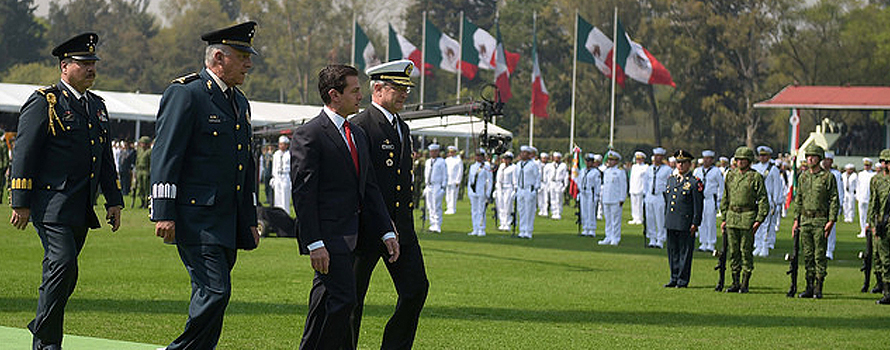
▲The president of Mexico during a ceremony with the Armed Forces, February 2018 [Presidency of Mexico].
ARTICLE / Valeria Nadal [English version] [Spanish version].
Mexico faces a new sixth-year term after closing 2017 as the most violent year in the history of the country, with more than 25,000 homicides. How has this situation been reached? Can it begin to be resolved in the coming years?
There are several theories about the beginning of drug trafficking in Mexico, but the most consensual argues that Mexican drug trafficking saw its birth when Franklin Delano Roosevelt - president of the United States between 1933 and 1944 - promoted the cultivation of the poppy in Mexican territory with the veiled intention to encourage the production of large quantities of morphine to relieve the pains of American soldiers during World War II (1939-1945). However, drug trafficking was not a serious national problem until the 1980s; since then, the cartels have multiplied, violence has increased, and crimes have been expanded by Mexican geography.
The new stage of Felipe Calderón
In the fight against drug trafficking in Mexico, the presidency of Felipe Calderón marked a new stage. Candidate of the conservative National Action Party (PAN), Calderón was elected for a six-year term, from 2006 until 2012. His program included the declaration of war on the cartels, with a "hard hand" plan that resulted in the sending of the Army to Mexican streets. Although Calderón's speech was forceful and had a clear objective, to exterminate the insecurity and violence caused by drug trafficking, the result was the opposite because his strategy was based exclusively on police and military action. This militarization of the streets was carried out through joint operations that combined the forces of the Government: National Defense, Public Security, the Navy and the Attorney General's Office (AGO). However, despite the large deployment and the 50% increase in security spending, the strategy did not work; the homicides not only did not decrease, but increased: in 2007, the first full presidential year of Calderón, 10,253 homicides were registered and in 2011, the last full year of his presidency, a record of 22,409 homicides was reached.
According to the Institute of Legal Research (ILR) of the National Autonomous University of Mexico (NAUM), in that record year of 2011 almost a quarter of the total Mexican population over 18 years (24%) was assaulted on the street, suffered some robbery in public transportation or was the victim of extortion, fraud, threats or injuries. The rates of violence were so high that they surpassed those of countries at war: in Iraq there was between 2003 and 2011 an average of 12 murders per 100,000 inhabitants per day, while in Mexico that average reached 18 murders per day. Finally, it should be mentioned that the number of complaints against this indiscriminate wave of violence was quite low: only 12% of the victims of the violence related to drug trafficking denounced. This figure is probably related to the high rate of impunity (70%) that also marked the mandate of Calderón.
The new approach of Peña Nieto
After the failure of the PAN in the fight against drug trafficking, Enrique Peña Nieto - candidate of the Institutional Revolutionary Party (PRI) - was elected President in 2012. With this, the PRI - that had governed for uninterrupted decades - returned to power after two six-year terms followed by absence (presidencies of Vicente Fox and Felipe Calderón, both of the PAN). Peña Nieto took office promising a new approach, contrary to the "open war" posed by his predecessor. He mainly put the emphasis of its security policy on the division of national territory into five regions to increase the effectiveness and coordination of operations, in the reorganization of the Federal Police and in strengthening the legal framework. All in all, the new president kept the Army on the street.
The results of Peña Nieto in his fight against drug trafficking have been worse than those of his predecessor: during his term of office, intentional homicides have increased by 12,476 cases compared to the same period in the Calderón administration and 2017 closed with the regretful news of being the most violent year in Mexico to date.
A few months before his term ends and in a last effort to amend the errors that have marked it, Peña Nieto led to the approval of the Internal Security Law, which was voted by the Mexican Congress and promulgated in December of last year. This law does not remove the military from the streets but seeks to guarantee legally that capacity for police action on the part of the Armed Forces, something that before had only a provisional character. According to the law, military participation in daily counter-narcotics operations is not to supplant the police, but to reinforce it in those areas where it is unable to cope with drug trafficking. The initiative counted on critics who, although they recognized the problem of the shortage of police means, warned of the risk of an unlimited military deployment at the time. Therefore, although Peña Nieto began his term trying to distance himself from Calderón's policies, he has concluded by consolidating them.
|
Source: Executive Secretariat, Government of Mexico |
What to expect from the 2018 candidates
Given the evident ineffectiveness of the measures adopted by both presidents, the question in this election year is what counter-narcotics policy the next president will adopt, in a country where there is no re-election and therefore each presidential six-year term represents a change of face. The three main candidates are, in the order that the polls have been marking: Andrés Manuel López Obrador, of the National Regeneration Movement (Morena); Ricardo Anaya, from the PAN coalition with the Party of the Democratic Revolution (PRD), and José Antonio Meade, from the PRI. López Obrador was close to reaching the presidency in 2006 and in 2012, both times as a candidate of the PRD (previously he had been a leader of the PRI); then he created his own party.
Meade, which represents a certain continuity with respect to Peña Nieto - although in the electoral campaign he has adopted a greater anticorruption tone - has pronounced in favor of the Law of Internal Security: "It is an important law, it is a law that gives us framework, that gives us certainty, is a law that allows the participation of the Armed Forces to be well regulated". Anaya has also favorably positioned himself for that law, since he considers that a withdrawal of the Army from the streets would be "leaving the citizens to their fate". However, it is committed to the need for the police to recover its functions and criticize harshly the Government's lack of responsibility in matters of public security, alleging that Mexico has entered a "vicious circle that has become very comfortable for governors and mayors." In any case, neither Meade nor Anaya have specified what turn they could give that would actually be effective in reducing violence.
López Obrador, from a position of left populism, supposes a major change with respect to previous policies, although it is not clear how effective his measures could be. In addition, some of them, such as granting amnesty to the main leaders of drug cartels, are clearly counterproductive. In recent months, Morena's candidate changed the main topic of his speech, which was earlier focused on the eradication of corruption and then expanded to security issues. Thus, he has said that if he wins the presidency he will take full responsibility for the country's security by integrating the Army, the Navy and the Police into a single command, to which a newly created national guard would be added. In addition, he announced that it would be exclusively he who would assume sole command: "I will assume this responsibility directly." López Obrador is committed to ending the war against drug trafficking in the first three years of his term, ensuring that, along with measures of force, his management will achieve economic growth that will result in employment creation and the improvement of well-being; which will reduce violence.
In conclusion, the decade against drug trafficking that began almost twelve years ago has turned out to be a failure that can be measured in numbers: since Calderón came to the presidency of Mexico in 2006 with the slogan: "Things can change for the better", 28,000 people have disappeared and more than 150,000 have died as a result of the drug war. Despite small victories for the Mexican authorities, such as the arrest of Joaquín "el Chapo" Guzmán during the presidency of Peña Nieto, the reality that prevails in Mexico is that of an intense criminal activity by the drug cartels. Unfortunately, given the electoral proposals of the presidential candidates, a rapid improvement cannot be expected in the next six years.
July 1 presidential election does not open a serious discussion on the fight against drug trafficking
The 'iron fist' that Felipe Calderón (PAN) began in 2006, with the deployment of the Armed Forces in the fight against drugs, was extended in 2012 by Enrique Peña Nieto (PRI). In these twelve years the status has not improved, but rather increased violence. In this 2018 elections none of the main candidates presents a radical change from model; the populist Andrés Manuel López Obrador (Morena) proposes some striking measures, but continues to count on the work of the Army.

▲The Mexican president on Flag Day, February 2018 [Presidency of the Republic].
article / Valeria Nadal [English version].
Mexico faces a change of sexenio after closing 2017 as the most violent year in the country's history, with more than 25,000 homicides. How has this status been reached ? Can it begin to be resolved in the coming years?
There are several theories about the beginning of drug trafficking in Mexico, but the most widely accepted argues that Mexican drug trafficking was born when Franklin Delano Roosevelt, president of the United States between 1933 and 1945, promoted the cultivation of poppy in Mexican territory with the veiled intention of promoting the production of large quantities of morphine to relieve the pain of U.S. soldiers during World War II. However, drug trafficking was not a serious national problem until the 1980s; since then, cartels have multiplied, violence has increased and crime has spread throughout Mexico.
The new phase of Felipe Calderón
In the fight against drug trafficking in Mexico, the presidency of Felipe Calderón marked a new stage. candidate of the conservative National Action Party (PAN), Calderón was elected for the six-year term 2006-2012. His program included declaring war on the cartels, with a "mano dura" (iron fist) plan that translated into sending the Army to the Mexican streets. Although Calderón's speech was forceful and had a clear goal , to exterminate insecurity and violence caused by drug trafficking, the result was the opposite because his strategy was based exclusively on police and military action. This militarization of the streets was carried out through joint operations combining government forces: National Defense, Public Security, the Navy and the Attorney General's Office (PGR). However, and despite the large deployment and the 50% increase in the expense in security, the strategy did not work; homicides not only did not decrease, but increased: in 2007, Calderón's first full presidential year, 10,253 homicides were registered and in 2011, the last full year of his presidency, a record 22,409 homicides were registered.
According to agreement with the high school of Legal Research (IIJ) of the National Autonomous University of Mexico (UNAM), in that record year of 2011 almost a quarter of the total Mexican population over 18 years of age (24%) was assaulted in the street, suffered a robbery in public transport or was a victim of extortion, fraud, threats or injuries. The fees of violence was so high that it surpassed those of countries at war: in Iraq between 2003 and 2011 there was a average of 12 murders per day per 100,000 inhabitants, while in Mexico that average reached 18 murders per day. Finally, it is worth mentioning that the number of complaints about this indiscriminate wave of violence was quite high leave: only 12% of the victims of drug-related violence reported. This figure is probably related to the high rate of impunity (70%) that also marked Calderón's mandate.
Peña Nieto's new approach
After the failure of the PAN in the fight against drug trafficking, in 2012 Enrique Peña Nieto, candidate of the Institutional Revolutionary Party (PRI), was elected president. With this, this party, which had governed for uninterrupted decades, returned to power after two consecutive six-year periods of absence (presidencies of Vicente Fox and Felipe Calderón, both from the PAN). Peña Nieto assumed the position promising a new approach , contrary to the "open war" proposed by his predecessor. He mainly focused his security policy on the division of the national territory into five regions to increase the efficiency and coordination of operations, on the reorganization of the Federal Police and on the strengthening of the legal framework . However, the new president maintained the Army's employment in the streets.
Peña Nieto's results in his fight against drug trafficking have been worse than those of his predecessor: during his term, intentional homicides have increased by 12,476 cases compared to the same period in Calderón's administration and 2017 closed with the regrettable news of being the most violent year in Mexico to date. With just months to go before the end of his six-year term, and in a last-ditch effort to right the wrongs that have marked it, Peña Nieto brought about the approval of the Internal Security Law, which was voted by Mexico's congress and enacted in December of last year. This law does not remove the military from the streets, but intends to legally guarantee that the Armed Forces have the capacity to act as police, something that previously only had the character of provisional. According to the law, the military participation in daily anti-narcotics operations is not to replace the Police, but to reinforce it in those areas where it is incapable of dealing with drug trafficking. The initiative was criticized by critics who, while recognizing the problem of the scarcity of police resources, warned of the risk of an unlimited military deployment over time. Thus, although Peña Nieto began his term in office trying to distance himself from Calderón's policies, he has concluded it by consolidating them.
|
source: Executive Secretariat, Government of Mexico |
What to expect from the 2018 candidates
Given the obvious ineffectiveness of the measures adopted by both presidents, the question in this election year is what anti-drug policy the next president will adopt, in a country where there is no re-election and therefore every six-year presidential term means a change of face. The three main candidates are, in the order of the polls: Andrés Manuel López Obrador, of the Movimiento Regeneración Nacional (Morena); Ricardo Anaya, of the PAN coalition with the Partido de la Revolución Democrática (PRD), and José Antonio Meade, of the PRI. López Obrador came close to reaching the presidency in 2006 and 2012, both times as candidate of the PRD (he had previously been leader of the PRI); he then created his own party.
Meade, who represents a certain continuity with respect to Peña Nieto, although in the electoral campaign he has adopted a more anti-corruption tone, has pronounced himself in favor of the Internal Security Law: "It is an important law, it is a law that gives us framework, that gives us certainty, it is a law that allows the participation of the Armed Forces to be well regulated and regulated". Anaya has also positioned himself in favor of this law, since he considers that a withdrawal of the Army from the streets would be "leaving the citizens to their fate". However, he supports the need for the Police to recover its functions and strongly criticizes the lack of responsibility of the Government in subject of public security, alleging that Mexico has entered a "vicious circle that has become very comfortable for governors and mayors". In any case, neither Meade nor Anaya have specified what turn they could take that would be truly effective in reducing violence.
López Obrador, from a left-wing populist stance, is a major change with respect to previous policies, although it is not clear how effective his measures could be. Moreover, some of them, such as granting amnesty to the main drug cartel leaders, seem clearly counterproductive. In recent months, Morena's candidate has changed the focus of his speech, which was first centered on the eradication of corruption and then focused on security issues. Thus, he has said that if he wins the presidency he will assume full responsibility for the country's security by integrating the Army, the Navy and the Police into a single command, to which a newly created National Guard would be added. He has also announced that he would be the only one to assume the single command: "I am going to assume this responsibility directly". López Obrador pledges to end the war against drugs in the first three years of his mandate, assuring that, together with measures of force, his management will achieve economic growth that will translate into the creation of employment and the improvement of welfare, which will reduce violence.
In conclusion, the decade against drug trafficking that began almost twelve years ago has result been a failure that can be measured in numbers: since Calderon became president of Mexico in 2006 with the slogan "Things can change for the better", 28,000 people have disappeared and more than 150,000 have died as a result of the drug war. Despite small victories for Mexican authorities, such as the arrest of Joaquin "El Chapo" Guzman during the Peña Nieto presidency, the reality in Mexico is one of intense criminal activity by drug cartels. From the electoral proposals of the presidential candidates, no rapid improvement can be expected in the next six years.
[Javier Lesaca, Weapons of mass seduction. Ediciones Península, 2017. 312 pages]
review / Alejandro Palacios Jiménez
What is it that drives a young man to abandon his friends and family and freely give up his dreams to join the Islamic State? With this question in mind, Javier Lesaca immerses us in this narrative in which he dissects the communicative apparatus used by ISIS to gain followers and spread its ideas and influence through the virtual Caliphate.
Thanks to his extensive professional career, the author sample in Armas de seducción masiva has a high Degree of depth and analysis, which is not incompatible with an entertaining and convincing narrative. Javier Lesaca Esquiroz (Pamplona, 1981), graduate in Journalism at the University of Navarra, works as researcher at the International Observatory of programs of study on Terrorism. His extensive knowledge on topic has allowed him to work in organisations such as the World Bank, the Inter-American Bank development and the Government of Navarre. Education Her work experience is complemented by her participation in forums such as the United Nations (UN) Security committee or the Euro-Arab Dialogue of the United Nations Educational, Scientific and Cultural Organisation (UNESCO).
His main hypothesis is that the crisis of credibility in traditional institutions, which has been fuelled by the economic and financial crisis of 2008 and is palpable in the 15-O movement, coupled with the technological revolution of the 21st century, has allowed the Islamic State (ISIS, or Dáesh, by its Arabic nomenclature) to influence the perceptions of Western citizens, in particular millennials, in a way never seen before. Millennials, who do not feel represented by their respective state institutions, seek to feel important and to participate in a new project that helps them to make sense of their lives and to stand up every day for a cause worth fighting for. And ISIS offers them just that.
 |
But what is Dáesh? Far from historical and religious explanations, Lesaca presents us with an unprecedented answer: the Islamic State embodies what is called modern terrorism, which uses the instruments of the new generations to get its messages across. In other words, Daesh presents itself as a global social movement that uses local communication campaigns that are disseminated throughout the world and whose terrorist acts are used as a mere "performance" within a broader communication strategy. Thus, Daesh defines itself as a leaderless movement that, paradoxically, moves away from the more purely religious elements to suit the concerns of the youth audience it plans to seduce.
The fact that it is a headless movement does not imply that it is internally unorganised. On the contrary, ISIS is a terrorist group that uses social networks very effectively and whose internal structure allows it not only to influence, but also to be in possession of some of the media. Its strategy consists of both developing its own media and using what is called "earned media". reference letter The former refers to Daesh's large communication structure based on: press releases, infographics, photographic reports, magazines in different languages, the Al Amaaq news agency, Al Bayan radio, Ajnabah music productions, the Isdarat website (now closed), audiovisual production companies and offline marketing in some parts of Iraq and Syria (billboards, posters and cybercafés). The media won is measured in terms of the number of times the terrorist group has succeeded in having its actions condition the diary of the traditional media.
The use of such a multitude of communication channels with the goal to create a parallel world, which its activists call the Caliphate, and to geographically segment the audience to modify the framing of the message - all under the cover of twisted interpretations of the Koran - is what is known as transmedia terrorism. To make this strategy as effective as possible, nothing is left to chance. One example given in the book, sample , is the control that the all-powerful Syrian executive producer Abu Mohamed Adnani, a friend of the caliphate's leader Abu Bakr al-Baghdadi, exercised over his subordinates, supervising and approving the content and messages that ISIS transmitted to the public. So much so that Adnani was considered by the West to be the de facto man who exercised the real day-to-day leadership within the terrorist organisation until his death in 2016.
All of this communicative strategy is precisely described in the book thanks to the large number of concrete examples that the author provides of massacres that Dáesh has carried out since its existence and the way in which these have been transmitted. In this sense, Lesaca emphasises the effectiveness with which ISIS, making use of the new media, camouflages real executions among images of video games(Call of Duty) or fictional films(Saw, Hunger Games, Sin City) in order to blur the line between reality and fiction, creating what is called a transmedia narrative. The idea is simple: how are these images going to seem cruel to you if they are similar to the ones you see in a cinema conference room eating popcorn?
In written request, Javier Lesaca attempts to define a useful strategy for dealing with the terrorism of the future. He argues that it is unclear what tools states should equip themselves with to confront this new form of terrorism. However, a good way to do so would be to make democracy fashionable, that is, to reinforce the values that have allowed the construction of the welfare society and development the greatest period of prosperity in our history. "The Islamic State has managed to win the victory of aesthetics, which is why we must make values such as democracy, freedom and equality attractive cultural products," says Lesaca. But this is not enough, he says. In addition, "we must promote institutional strengthening by eradicating corruption and implementing policies to create a Economics capable of absorbing all the talent of the new generations and achieving an effective management of public services".
At summary, this is a book that is a must-read for all those who want to familiarise themselves with the internal organisation and Structures of the power of Daesh, its objectives and the means it uses to achieve them group . It is also an invaluable guide for the study and subsequent reaction of the West to the communication campaigns not only of the Islamic State, but also of subsequent terrorist organisations that will form part of what is already known as modern terrorism.
The deployment of nearly 19,000 peacekeepers has reduced violence, but human rights violations continue
President Joseph Kabila's leverage of power and social and tribal resentment have fueled violent conflict inside the Democratic Republic of the Congo over the past year and a half. So far, 3.9 million people have been displaced; In 2017 alone, 3,300 deaths were recorded. The UN intervention has reduced the levels of violence, but the conflict in Kasai province is still alive.
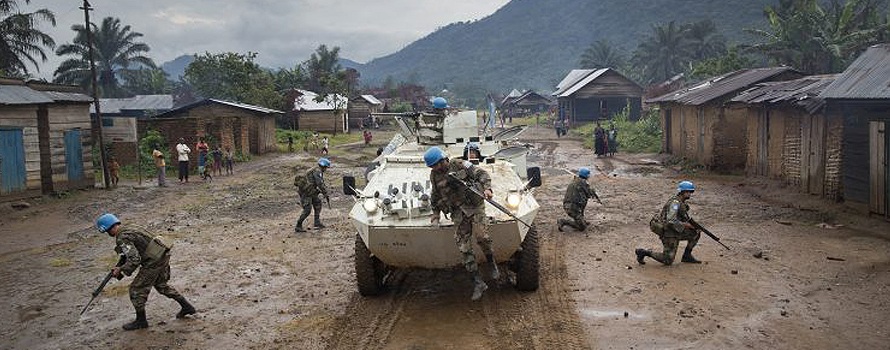
▲Forces of the mission statement UN Stabilization Agency in the DRC [MONUSCO/Sylvain Liechti]
article / Eduardo Villa Corta
The Democratic Republic of the Congo (DRC) is in the midst of a major civil crisis that has been going on for a long time. While this country has had numerous internal problems and conflicts, the one in the Kasai region, in the south-central part of the country, stands out for its high issue of deaths and human rights violations.
The origin of this conflict dates back to 2016, when President Joseph Kabila, in power since 2001, decided to delay the elections in order to remain in power longer. The death of his main opponent, Étienne Tshisekedi, facilitated Kabila's intentions to remain in the presidency, but he has since had to confront a civil service examination Kamuina Nsapu's militia.
To understand the status It is necessary to start from the tribal division present in the DRC. Territorial chiefdoms and divisions are administered by a traditional chief and his committee. These hereditary lines follow a succession process, which must be ratified by the Ministry of the Interior. In the case of the Kamuina Nsapu tribe, in January 2012 there was a problem with the access to the leadership of Jean Pierre Nsapu Pandi, because the Ministry of the Interior (appointed by Kabila) did not recognize the new leader. After some time, he received word that the Ministry had selected another chief from outside the tribe. This selection generated resentment that led to a revolt. From that moment on, Nsapu Pandi decided to start recruiting people in the area.
Among the reasons why this movement grew and expanded in the region is in the first place the status of widespread poverty. Given low living conditions and low economic growth, the leader's promises were a popular incentive. The knowledge of the language Local Tshilub and the Charisma itself staff Nsapu Pandi also helped him gain supporters, so that by the end of July 2016 some 800 young people were following him. It was then that the militia, called Kamuina Nsapu out of devotion to their leader and guide, the revolt began, with the burning of a police station 20 kilometers from the city of Tsimbulu.
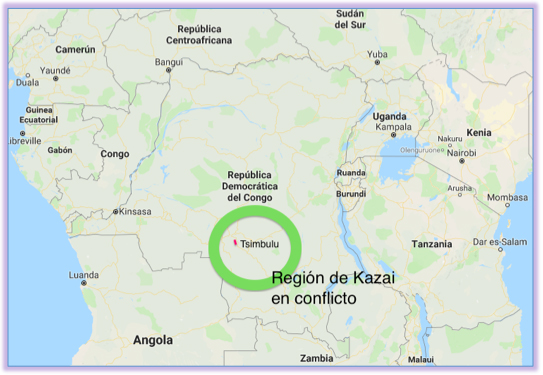 |
The conflict took a leap a few weeks later, when a clash broke out between police and military in Tsimbulu. The episode ended with Pandi's death order in combat, given by the president himself. From that moment on, the newly formed militia was grouped with the civil service examination Kabila and went from being a group to become a national one. It is now a militia in civil war with the government, in a confrontation that has devastated the Congolese population.
The Kamuina Nsapu militia and its atrocities had a swift response from Kabila. The latter responded with disproportionate and disproportionate force, since in their actions against the militia the authorities caused some 400 deaths in the first weeks, both among armed elements and among the civilian population. The group has grown exponentially due to the strong civil service examination Kabila, who nevertheless continues to hold power in Kasai to this day. Both sides of the conflict have been involved in atrocities and serious human rights violations.
The data about deaths and harm to people are not easy to obtain. According to sources in the Catholic Church, in 2017 alone the conflict caused at least 3,300 deaths. That same year, 1.7 million people left their homes and moved to neighbouring countries in search of asylum. To date, a total of 3.9 million people have been displaced. The conflict has exacerbated famine in the country, which has reached 7.7 million people. Of these, 3.3 million are located in the Kasai region, which is the hardest hit by the conflict. In January 2018, it was estimated at 400,000 issue of malnourished children. The numbers are only rising due to migration and the status of danger suffered by thousands of people. The DRC has order the World Bank $1.7 billion to be able to establish and help the population. But this sum has not been delivered nor has there been any financial contribution from any international organization.
The truth is that these atrocities are the responsibility of both sides in the conflict. The involvement of both parties can be seen in the finding of mass graves (80 have been found in the area) following a United Nations initiative. It showed that everything from beheadings to mutilations had been committed, and that the victims ranged from soldiers to children. The UN has sent observers and "blue helmets" to the area: a total of 19,000 troops whose troops are being sent to the area. mission statement It is to try to keep the peace, support civilians and investigate the events that happened. So far, 2,800 human rights violations have been recorded. At least two UN observers were beheaded in the Kasai region, which is difficult for international organisations to access due to government restrictions and the very unfolding of violence.
This conflict is based on social and tribal resentment and the struggle for control of the country. In order for the country to recover, both Kabila and the Kamuina Nsapu would have to reach some point in the country. subject complimentary. To achieve this, the international community should reiterate the pressure exerted in 2016 at the start of a conflict that has escalated over almost two years. The African Union and the UN should push both parties to the dispute towards a ceasefire, in mediation both regionally and extracontinentally. The most conducive solution to the stabilization of the country is the holding of free elections.
Showing the range 351 - 360 of 426 results.

